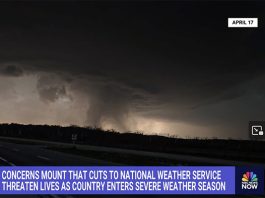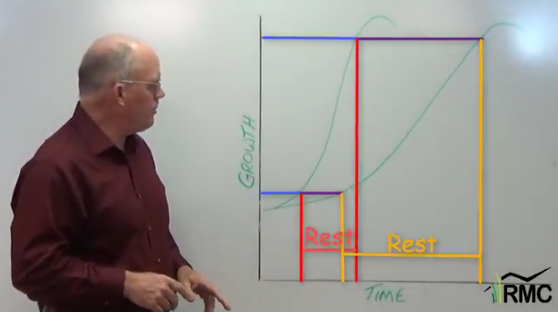A common question for graziers is what does ‘back-grazing’ mean. Then their next question becomes for how long is back-grazing acceptable?
Back-grazing means letting livestock go back across areas that have been previously grazed, usually to access a fixed water point. What we are trying to avoid is allowing animals to bite off regrowth occurring following the prior grazing event on a plant. Back-grazing is acceptable up until the time stock return to take the second bite.
Here are some illustrations of the concept with explanations with each photo.
We’ll start with a nice satellite image showing a 3-day grazing sequence with stock returning to the same water point all three days. The white lines indicate where the daily strip fences had been. Note most of the animals are concentrated in the day 3 allocation where they should be. You can see a few dots in the previously grazed strips as they move from the fresh feed to water. Then they return to the new strip because that is the best feed in the pasture.

The photo below shows a similar situation. Again you can see a few animals moving along the inner circle fence as they go to and from the water point. If you move stock in the morning and check them again in the evening, you should find at least 75-80% of the animals on that day’s strip. If more than a third of the herd are out picking around in the previously grazed areas then you are not giving them enough feed.
This was once-a-day moves. In this particular case I had let the pasture ‘get away’ from me and was in the process of cleaning it up, so this is higher than usual stock density, and right at 210,000 lbs live weight/acre. Generally we are in the 60,000-90,000 lbs/acre range with daily moves.

With proper high stock density grazing there is little motive for the stock to go back to where they just grazed. On irrigated or high natural rainfall pastures you can generally get away with 3 or 4 days of back-grazing. Anything more than that and you will start having issues with cattle grazing the regrowth.

What is the primary variable for when animals will return for the second bite?
 Folks have asked me “Is it timing, stock density, sward height, or distance between the new allocation and the water point?”
Folks have asked me “Is it timing, stock density, sward height, or distance between the new allocation and the water point?”
In my experience time is the overriding factor. But distance from water points is something to be considered. If you are on such productive pasture that regrowth induces the second bite on day 4, the likelihood of your stock being an excessive distance from water is pretty low. There are over 500 pairs + bred heifers in the aerial pictures so it is a decent sized herd. Even at that, with only six fixed water points on this pivot, it would be very rare that any of them would ever be more than 1500 ft from water. Regarding sward height, on excessively tall forage, you might actually want them to take a second bite to freshen up the sward. There would still likely be adequate post-grazing residual left and CHO stores are fully charged so regrowth would not be impeded.Some folks have also noted that cattle will return to previously grazed areas to loaf, and that the impacts can be quite severe to these areas. This is especially true in absence of shade when cattle seek out a point on the landscape with good air drainage. I have seen these spots that are just as hammered as lone shade trees back in the Midwest or South. So keep that in mind when managing back grazing.





Thanks for these practical and simple reminders, Jim; I know you could share much more on each of these. The pictures help with me and my kids, to see what we’re working toward.
Another tip in limiting back grazing: More (potential) watering points. We have a frost-proof waterer in every fenced field. (They straddle the fence, so one waterer can serve 2-3 fields.)
When installing 6000 ft of water lines on our farm, my son had the foresight to put recessed quick connects every 120 feet within our biggest fields. So when we split our herd or big fields with polywire, we can still maintain higher density and limit backgrazing with movable, 75 gal, float valve waterers. Does take more time, but also helps spread manure evenly and keeps cattle in day 1-3 areas.
On neighbors’ land with few to no fences and installed water, these moveable waterers also prevent our cattle from making ‘eyesores’ in neighbors’ pasture, through backgrazing or loafing.
We were extremely dry last six weeks in SW VA, so much so we had to feed hay again last two weeks. The field with hay became a sacrifice area, with backgrazing for 10 days. Now that rains have returned, cattle moved and most forage growing well again, that sacrifice area has not, the crowns of those plants eaten repeatedly for 10 days. Same with neighbors who did not limit backgrazing, they’re still feeding hay. So we can see how long it’s taking for this 10-day backgrazed field to recover, on one side of the fence vs. the other. Overgrazed areas can be instructive, if I remember to compare them over time to those treated better…
Comments are closed.